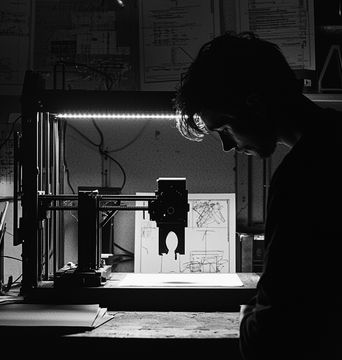RISE IN 3D-PRINTED FIREARMS SPARKS LEGAL DEBATE: HOME MANUFACTURE AND ONLINE BLUEPRINTS UNDER SCRUTINY

The relentless advancement of technology rarely stops to consider the potential consequences, and the current rise of 3D-printed firearms, also known as 'ghost guns' for their lack of traceability, is a vivid illustration of this fact. This development has undeniably altered the landscape of firearm manufacturing and poses numerous challenges to law enforcement, again making the debate over firearm control a prominent topic in our society.
Until recently, gun production was primarily confined to industry giants with large-scale production capacities. The emergence of 3D printing, however, has disrupted this traditional model, enabling the manufacture of unregulated and untraceable firearms within the privacy of individuals' homes. This shift not only democratizes production but also poses considerable legal and societal challenges.
This technology's risqué potential became evident when Luigi Mangione, accused of shooting UnitedHealthcare CEO Brian Thompson, was reportedly found with a partially 3D-printed pistol. Such incidents raise urgent questions about unregulated access to potentially lethal technology and the potential implications for public safety.
Law enforcement agencies have discernibly expressed apprehension, with ghost guns complicating investigations and posing new threats at sites where conventional firearms are prohibited. Despite a 25 percent drop in ghost gun recoveries between 2022 and 2023 due to new federal legislation requiring background checks for kit sellers, the challenges surrounding ghost guns are far from resolved.
While federal law necessitates the inclusion of some metal pieces, constructing a gun using a 3D printer remains chiefly legal, thanks largely to the ambiguity surrounding the sharing of gun blueprints online. The lack of consistent rulings and the ongoing lawsuits only highlight the persistent gray area, leaving room for exploitation.
On the other end of the spectrum, diverse online collectives have been propelling the advancement of 3D-printed guns. These groups, ranging from technical hobbyists to individuals who fear government overreach, represent different motivations and philosophies. However, some have begun to draw the attention of anti-government extremist groups, thus raising concerns about the potential misuse of 3D-printed guns and printed firearm blueprints.
The emergence of ghost guns highlights the unanticipated consequences of technological innovation and underscores the importance of proactive policy-making. With 3D printing technology poised for continuing growth, a balanced approach is essential. We must reconcile the benefits of emerging technologies with the imperative of keeping society safe whilst also safeguarding individual liberties.
Ultimately, the phenomenon of ghost guns calls for a constructive dialogue between policy makers, technology experts, and wider society. The goal should be clear: to shape a technologically advanced future that is also secure, respectful of individuals' rights but above all, cognisant of the greater societal good. As we navigate the challenges posed by 3D-printed firearms, it is this complex balancing act that will define our approach and, hopefully, our future success.